Cert 15 117mins Stars 5
Blade Runner: The Final Cut (1982, 2007)
Blade Runner: The Final Cut is the definitive version of director Ridley Scott‘s 1982’s sci-fi noir masterpiece.
Uniquely it stands on a pedestal with 1927’s Metropolis, and 1968’s 2001: A Space Odyssey, in the sci-fi canon, and alongside 1944’s Double Indemnity as a doom laden noir.
Based on the 1968 novel Do Androids Dream of Electric Sheep? by Philip K. Dick, Blade Runner is a combination of extraordinary visuals, superlative sound, Blade Runner’s superb cast includes Harrison Ford, Rutger Hauer, Sean Young, Edward James Olmos, M. Emmet Walsh and Daryl Hannah.
With various cuts of the film existing and offering very different endings, Scott trims The Final Cut to its noir roots and in doing so unequivocally resolves a long running debate concerning the nature of the central character, the ‘Blade Runner’, Rick Deckard.
Digitally remastered in 2007 for the 25th anniversary of the original 1982 release, Scott removed Deckard’s voice-over and a happy ending which the studio imposed on the original theatrical release, as well as reinserting a unicorn dream sequence.
The film takes place in Los Angeles of the year 2019. Six genetically engineered humans called replicants have escaped from an off-world colony and made their way to Earth, where their presence is outlawed.
In Los Angeles two replicants are killed after trying to break into the headquarters of the Tyrell Corporation. This prompts M. Emmet Walsh‘s seedy police captain to strong-arm Harrison Ford‘s reluctant former detective, Rick Deckard, back into harness.
Though insisting he is twice as quit as when he walked in, Deckard accepts the order to find the remaining four replicants and destroy them, and an origami-modelling cop called Gaff is assigned to monitor Deckard’s progress.
While on the case Deckard first interviews then starts an affair with Sean Young‘s Rachael. She’s the glamorous niece of the head of the Tyrell Corporation, Dr. Eldon Tyrell, the chess-playing creator of the replicants.
The euphemistic use of the word ‘retire’, reminds us Dick’s paranoid fear of the inevitable decay of our mortal bodies, reinforced by Scott scattering his sets with mannequin parts.
The screenplay by Hampton Fancher and David Peoples is a loose adaption of the source novel but is faithful to Dick’s obsessions of decay, transformation, paranoia and identity, and in The Final Cut at least, is respectful of noir’s hard-boiled cynicism.
It can also be read as a twisted riff on John Milton’s epic poem, Paradise Lost, with the replicants representing fallen angels rejecting their godlike creator.
Incorporating tolling bells, the magnificent score by Greek composer Vangelis, announces key themes as the film opens and veers between the apocalyptic and the heavenly.
The Tyrell Corporation’s HQ is a pyramidal mausoleum, a suitable resting place for a god before an ascension to a higher level of existence. The replicants can be interpreted as angels or demons who have descended to Earth from the chaotic off-world to challenge the Earth’s divine order, and possibly raise humanity to a higher plane of existence.
The subjugated and animal nature of Earthbound humanity is explored through the use of rats, those harbingers of disease, decay and death. Tyrell talks of deserting rats when discussing the altering of the replicant’s DNA. There are pet rats among J.F. Sebastian’s engineered toys. Deckard is herded like a lab rat through the decaying prison of a mansion block.
Filmed in the ironwork interior of LA’s Bradbury building, the dreamlike apartment of genetic engineer J.F. Sebastian is a repository of childhood toys which Deckard must escape before he can be enlightened as to his real identity.
The relationship between the replicants provides the emotional core of the film. Daryl Hannah wraps herself affectionately around Rutger Hauer, who plays her partner and the replicant’s leader, Roy Batty.
And though the a homicidal Batty is set up as the villain, Hauer’s poetic and physical performance aches with life, love and loss. His powerful closing monologue which always bring s me to tears is all the more astonishing for being self-penned.
For those who think Scott is a stylist indifferent to his actors labours, they should consider the performance he elicits from Sean Young, who is perfectly in tune with the demands of the role.
In a brilliantly tense conclusion we see Rachael asleep in her apartment and Deckard approaching her, gun in hand. We don’t know whether he will kill her or kiss her.
There’s a declaration of love and a big sigh of relief from the audience. But as Deckard and Rachael leave his apartment, they find an origami unicorn left by Gaff. This changes the entire thrust of the story and our understanding of it.
Gaff’s origami is evidence he knows Deckard’s dreams are memory implants, causing Deckard and the audience to belatedly realise he is also a replicant. His entire life is a lie and he has unwittingly killed his own replicant family members at the behest of the police, his enemies, who he realises he now has to escape from.
This bleak revelation is perfect film noir.
But the power of Blade Runner has been diluted by the studio edit prompting a discussion over Deckard’s replicant status. This drags our focus from a brilliant noir ending to a non-debate over the nature of Deckard’s humanity.
Instead of the audience being overwhelmed by the force of this drama, for nearly forty years everyone has chuntered over the ‘is he a replicant’ debate, a controversy this definitive version retires.
Harrison Ford was strategically picked to play Deckard in a casting masterstroke of cinematic deception. The audience is fooled by their own presumption the star is playing a hero.
A huge star from his swashbuckling roles in 1977’s Star Wars, and 1981’s Raiders of the Lost Ark, as Han Solo, and Indiana Jones, the audience expected more of the same. Ford’s status as heroic Hollywood leading man leads us to believe Deckard is the hero until we and Deckard realise he isn’t. We don’t expect a character played by Ford to be the fall guy.
As a hard drinking detective with a laconic delivery and ready attitude in the face of authority, Ford is presented as a futuristic Humphrey Bogart, rebooted, updated and teleported in from Hollywood’s Golden Age of noir.
Ford is happy to riff on Bogart’s goofy undercover book lover in 1946’s The Big Sleep to emphasise the connection. There’s even a reference to Sydney Greenstreet in Bogart’s classic wartime melodrama, Casablanca as Deckard interrogates a fez-wearing gangster, The Egyptian.
Plus the story is told through Deckard’s eyes. So Deckard’s the hero, right? He’s an updated and rebooted sci-fi Philip Marlowe, right? Wrong.
To watch The Final Cut is to realise, and this is despite what Bryant tells him, Deckard is not especially good at his job.
He’s beaten up in turn by each of the four replicants. While failing to dispatch either of the males, he shoots the unarmed females, and he only manages to kill one of them by shooting her in the back as she’s running away. And as Batty mockingly points out, Deckard is not very sporting. Ordered to retire Rachael, Deckard has sex with her instead.
Far from being Bogart 2.0, Deckard is far more of an upgrade of Fred MacMurray’s hapless insurance salesman Walter Neff from 1944 noir masterpiece. Double Indemnity. In classic noir fashion, Deckard is too dim to realise he’s always behind the game. it’s not until the end he understands how little he knows. He’s a prize chump.
Blade Runner is rightly celebrated for its superlative sci-fi styling, but I love The Final Cut for revelling in the noir at the heart of this rain-soaked LA story.
@ChrisHunneysett
Nemo’s Fury is an exciting digital reinvention of Jules Verne’s classic steampunk adventure novel, 20,000 Leagues Under the Sea.
Download for free to your smartphone or tablet, search your app store for ‘Nemo’s Fury’.
A mobile interactive fiction game employing a bespoke combat system and hundreds of original illustrations, Nemo’s Fury is inspired by the 1980’s role-playing gamebooks such as ‘The Warlock of Firetop Mountain’, of the Fighting Fantasy series which celebrated its fortieth anniversary last year.
Each player joins the legendary Captain Nemo on board his fabulous submarine, the Nautilus, on a wild voyage of adventure, intrigue, loyalty, and betrayal.
There’s mayhem, monsters, maelstroms and murder as Nemo takes you from the South Pacific to the Northern Atlantic via Antartica and the Red Sea. And if they survive long enough, the player will of course fight a giant squid.
Available on your smartphone or tablet, (but not yet your desktop), click on your app store below
Or go to Nemo’s Fury for more info




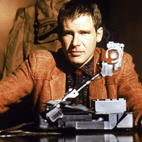
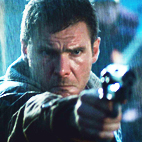
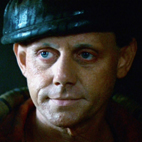
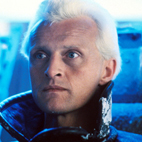
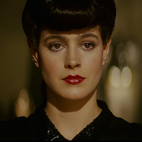





You must be logged in to post a comment.